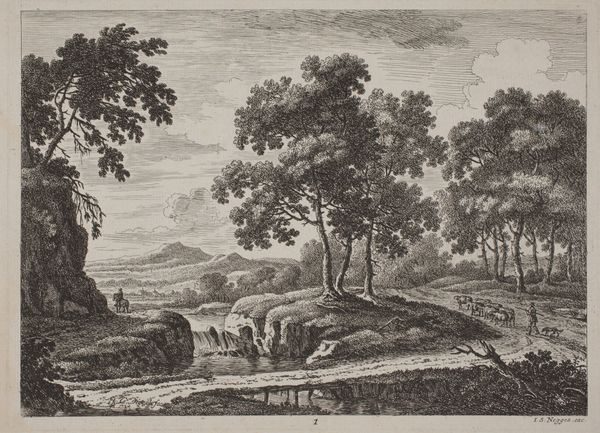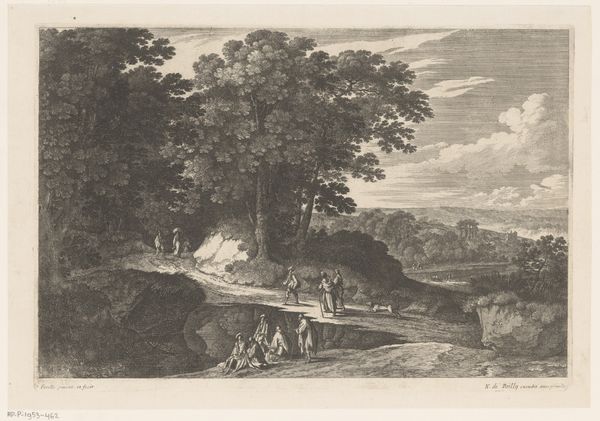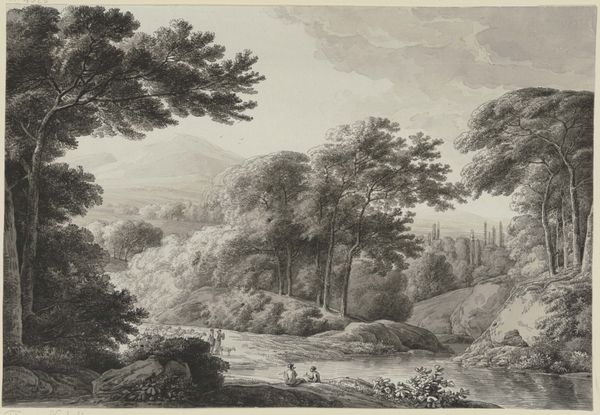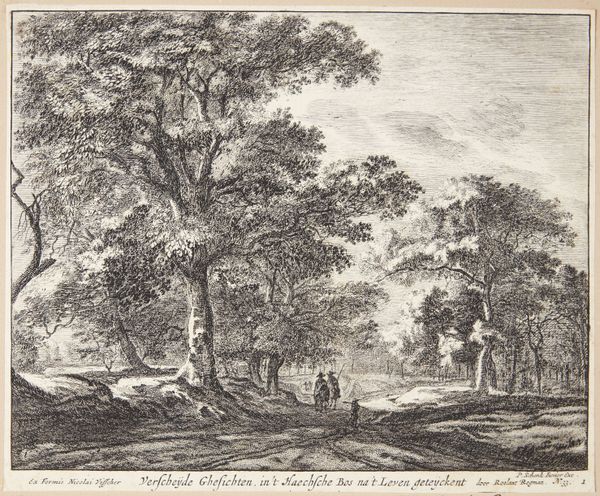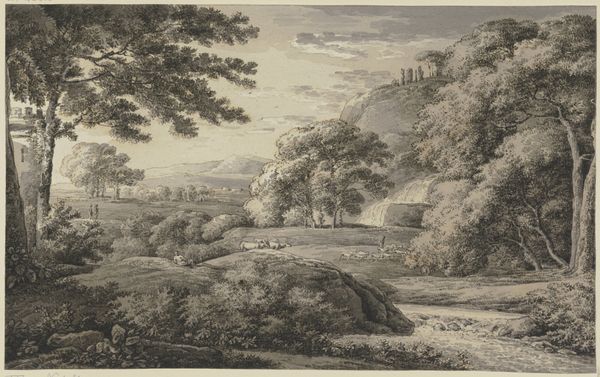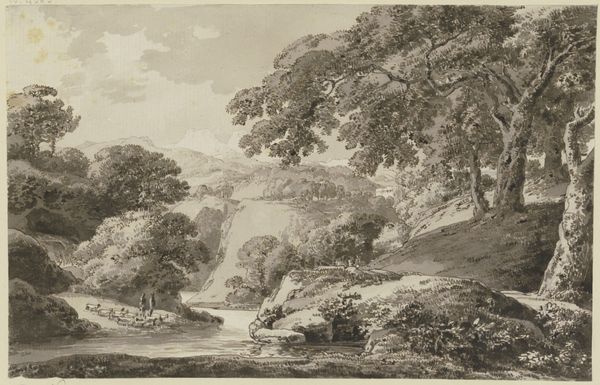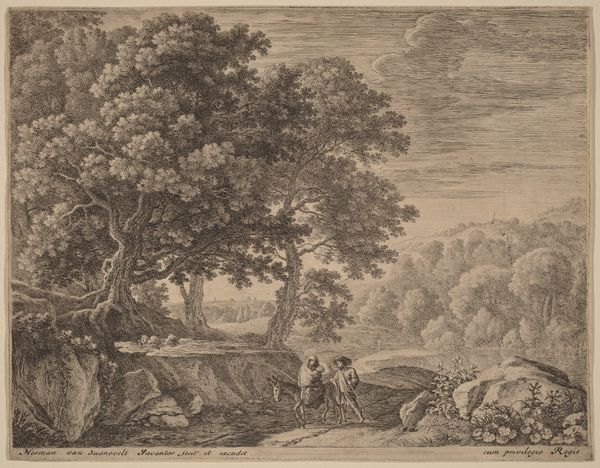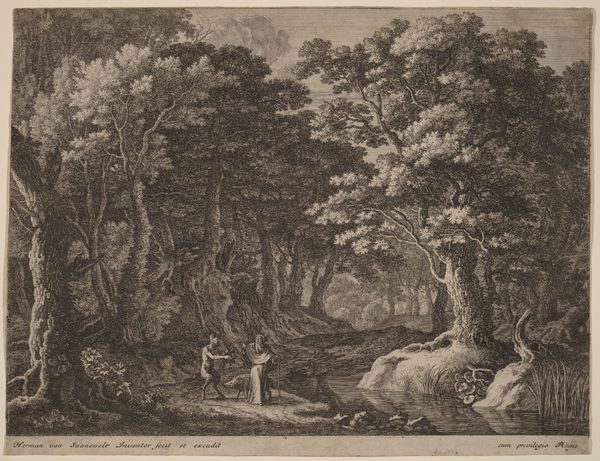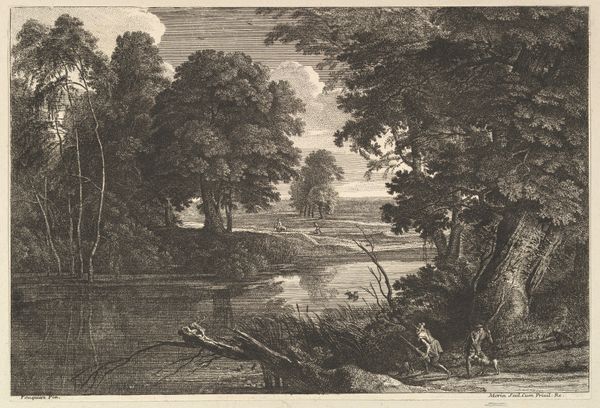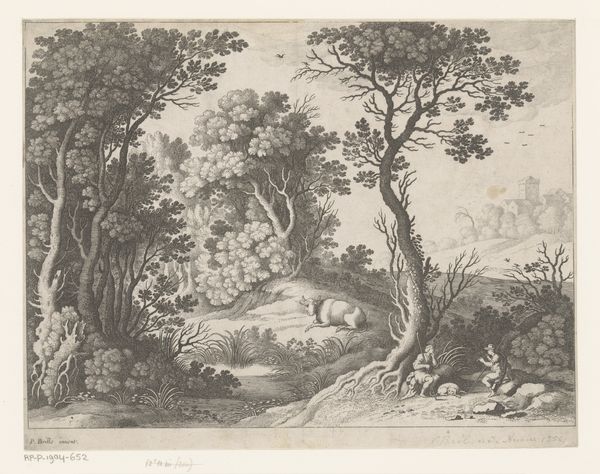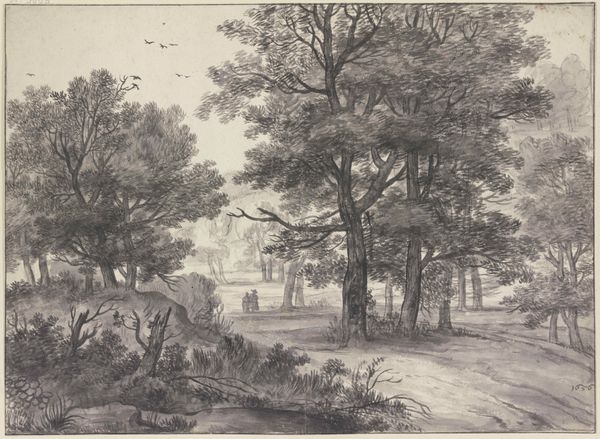
drawing, print, engraving
#
drawing
#
baroque
# print
#
landscape
#
engraving
Dimensions: plate: 11 5/8 x 18 1/8 in. (29.6 x 46 cm) image: 8 7/16 x 12 3/8 in. (21.4 x 31.5 cm)
Copyright: Public Domain
Curator: What a detailed pastoral scene! This is "Le Bouvier pres d'une mare," or "The Cowherd by a Pond," an engraving by Jean Morin, dating roughly from 1605 to 1650. Currently, it resides here at the Metropolitan Museum of Art. Editor: Okay, first impression? Kinda dark! Not spooky dark, more like...moody and still. All those intricate lines in the trees make them feel heavy, weighed down, almost like they're holding secrets. And the light makes everything look like it is set during the magic hour before the sun sets. Curator: I think your intuition is spot on. Looking at Morin's placement of the figures, we see that they exist within an ecosystem where class and the rural sphere are interdependent—their co-existence speaks to a reliance upon each other for survival and a shared sense of place in the landscape. The work reminds me a bit of Foucault's theories of power, specifically as it permeates even seemingly benign relationships in bucolic spaces. Editor: That’s heavy stuff, for a guy walking his cows! But I get what you mean. I keep getting drawn back to that little house in the background. Is it abandoned? Waiting for someone? It's like the whole engraving is posing some kind of unanswerable riddle. Like what if those cows and that cowherd, their livelihoods and way of life, are now at stake, that they face potential displacement because their work is less sustainable? What then? Curator: The temporality embedded into this composition reveals that the Baroque landscape genre is never solely about rendering topography—that every image is fraught with socio-economic implications. It becomes vital that we acknowledge that rural spaces have, historically, become sites where issues around capital and power are negotiated. Editor: Well, I was just waxing poetic, but now I'm actually bummed out by all this class warfare! Though now when I look at that little house it feels much lonelier somehow, an image for so many people in that period who have had to endure so much social upheaval. Curator: Well said. Perhaps this piece isn't merely about surface beauty; maybe it compels us to investigate and contextualize those overlooked intersections between landscape, class, and socio-historical awareness. Editor: Exactly. It started off so pretty, now I see it as this potent image that encapsulates the complexities of our ever-evolving world. Pretty impressive stuff!
Comments
No comments
Be the first to comment and join the conversation on the ultimate creative platform.

